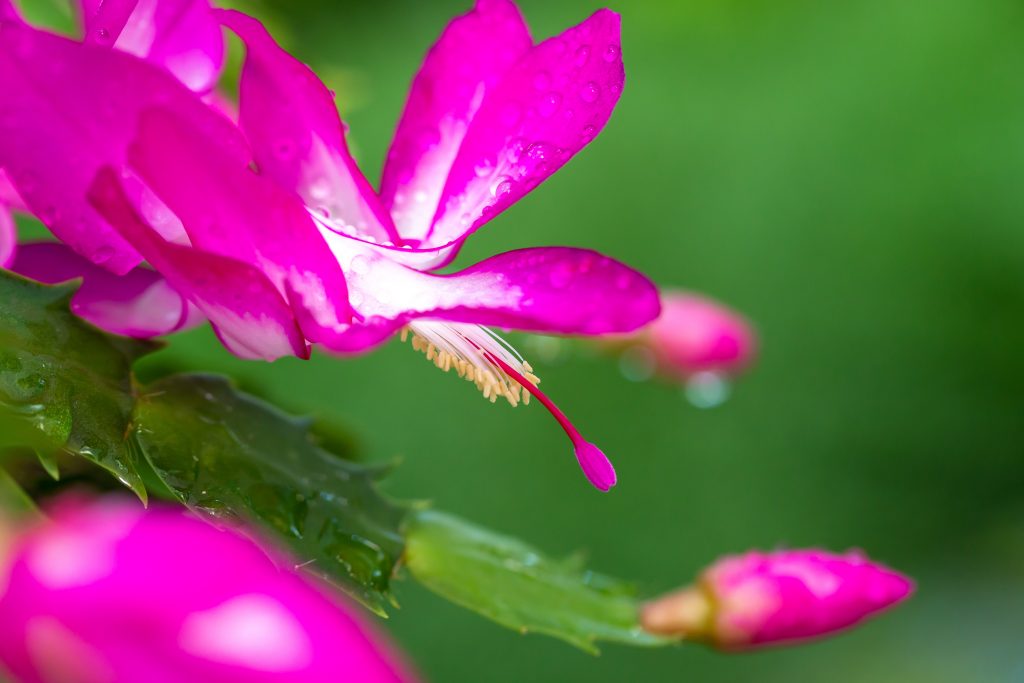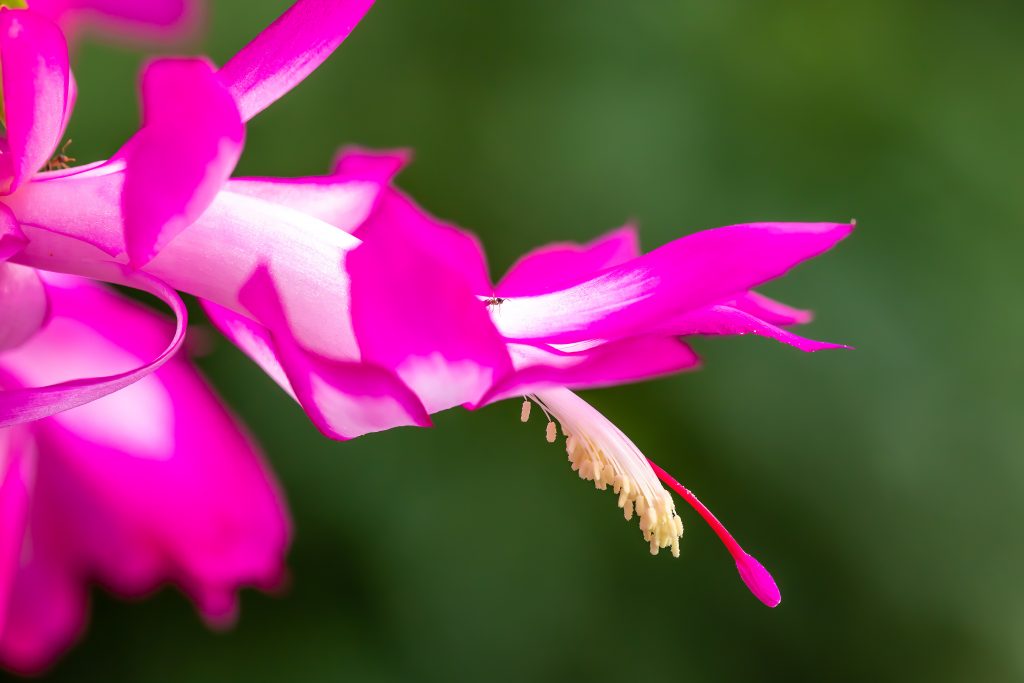Christmas Cactus: A Case of Mistaken Identity
My friend Carla knows a lot about plants. Ever since the day her mother found dirt in her diaper, she’s been a gardener. When she told me she couldn’t figure out why her Christmas cactus bloomed at Thanksgiving every year, I knew something was up. “Maybe it’s a Thanksgiving cactus,” someone suggested. She thought they were joking. She had never heard of a Thanksgiving cactus. But, it turns out they were right.

The edges of Thanksgiving cacti (Schlumbergera truncata) have pointed projections that feel jagged or serrated. This one bloomed last month in the Conservatory. Image by Tom Hennessy
There are actually three seasonal cacti, explains Ryan Olsen, the Conservatory Horticulturist at Lewis Ginter Botanical Garden. They are closely related and look very much alike. If you are not a plant expert, it can be hard to tell them apart. Collectively, we call them “holiday cacti.” They belong to a group of succulents called leaf cacti, whose flat, fleshy pads, which look like “leaves,” are in fact segmented stems that ignite at the tip in a single bright blossom.
Even color isn’t a reliable clue to their identity. In the spring, Easter cacti produce a spray of star-shaped purple, red or pink blossoms. Fall-flowering Thanksgiving cacti can be pink, red, white, or yellow. Christmas cacti bloom white, red, or occasionally yellow during the winter holidays. A change in temperature can trigger a change in color!
The best way to tell them apart? Close your eyes. Gently run your finger around the edges of a single stem segment. If you feel tiny bristles at the tip of each fleshy stem, you have an Easter cactus (Rhipalidopsis gaertneri). The edges of Thanksgiving cacti (Schlumbergera truncata) have pointed projections that feel jagged or serrated, while the edges of Christmas cacti (Schlumbergera bridgesti) are softly scalloped. There are pen and ink illustrations online that illustrate the differences.
Holiday cacti are native to the Brazilian rainforest. “They are epiphytic,” Olsen explains. “Meaning they grow naturally on the surface of trees, rocks, or other plants, pulling the moisture and nutrition they need from the atmosphere.” He admits that it’s odd to think of cactus thriving in the steam and shadow of a rainforest. You can find the Garden’s large pink and white Thanksgiving cacti nestled among the orchids in the East Wing of the Conservatory, where the humidity is high and the light is low.

Look closely at the bloom of this Thanksgiving cactus in the Conservatory. You might just see two pollinator ants! Image by Tom Hennessy
Surprisingly simple to grow, holiday cactus tolerate low water conditions, preferring frequent watering in small amounts. But predicting their precise bloom time can be tricky. Plant health and growing conditions have a lot to do with it. Olsen offers a tip for encouraging bloom. “Give them lots of indirect light, 60-degree temperatures, and high moisture and they will bloom reliably,” he says. All three holiday cacti are known as “short day” plants. They need 10-12 hours of darkness in a 24-hour cycle (along with cool temperatures,) in order to bloom. Christmas and Thanksgiving cacti need six weeks of short days to bloom; Easter cacti require as many as 8-12 weeks of short days. Keep the growing media evenly moist, and offer less water just before bloom time. Be sure to mist them daily to keep humidity high. Even if you don’t, you’re likely to be rewarded with an explosion of long-lasting blooms, each flower lasting for a week or more.
Perhaps because they require so little care, holiday cacti can live to be over 100 years old. We like to keep them as houseplants and give them as gifts. My friend Neale just gifted one of her seven Christmas cacti to a friend who has long admired their collective profusion of color at Christmas. Now there are six. She figures that one of her most beloved old-timers, which came from her grandmother, is at least 50 years old. Another was a parting gift from a childhood friend who passed it on before she died 18 years ago. It seems our most-cherished plants come from friends, whose love knows no season. “These guys have their own stories,” Neale says. “They are beautiful living remainders of the people who passed them on to you.”